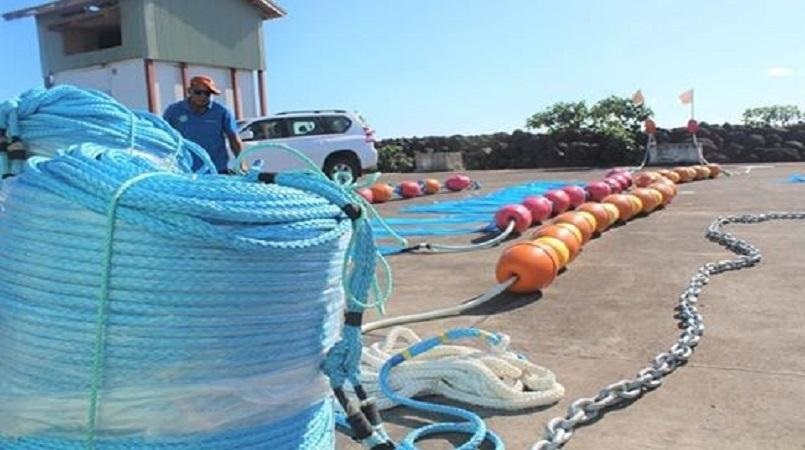
A forecast increase to Samoa's tuna population in coming decades could be more than erased by the harmful impacts of climate change, a top fisheries official has warned.
The Assistant Chief Executive Officer of the Fisheries Division, Magele Etuati Ropeti, says that while fish continues to be Samoa's number one export earner (taro and nonu are second and third) its long-term growth cannot be presumed.
A recently-released report, making use of modelling from Pacific fisheries authorities forecast that by 2050 the population of Skipjack tuna will increase by 40 per cent by 2050 as climate change makes fish move into cooler waters).
Magele said frequent occurrence of extreme weather events and prolonged raining periods leading to floods can be very destructive to fisheries habitats in the coastal areas such as lagoons and reefs.
“For tuna stocks, the current impacts of climate change are not noticeable except during strong La Nina and El Nino cycles where changes in catch patterns can be observed and seen in volumes of catches," she said.
Magele also highlighted the report by Johann Bell, the Senior Director of Pacific Tuna Fisheries at Conservation International, on findings that Samoa’s tuna scale will increase by 2050 as a result of the movement of fish into cooler waters brought about by changing climate.
“There are some critical parameters that the report did not take into considerations. One is the ocean acidification issue. The acidity of the ocean is projected to increase in the future,” Magele said.
“Some studies have demonstrated that exposing tuna larvae in lower pH levels impacts greatly on their survivability as some of their organs were affected and resulted in high mortality rates. This will affect the recruitment of tuna stocks and the fisheries it supports.”
“In addition to revenue generated through fish exports over the years, Samoa is a party to other regional and international arrangements that also provide income for Samoa," Magele said.
In addition to experts other activities such as fish market operations, fishing licenses and national monitoring activities also make contribution to revenue generated by local fishing.
Magele said the tuna that pass through Samoa’s estimated 120,000 km Exclusive Economic Zone, support the troll fishery which targets skipjack and the longline fishery that targets albacore tuna, bigeye and yellowfin tuna.
“On an annual basis or average tuna is estimated to generate through regional arrangements around USD$1.3 million ($3.4 million tala); revenue from license fees about $650,000 tala, (US$243,000) and transshipment fees about $100,000 tala (US$37,508),” Magele said.
“There is also transshipment and fishing vessels calling to our ports where they also contribute immensely to the economy through vegetables, fruits, etc. supplies, labour and onshore support when these fishing vessels call to port.”
Last year, Samoa’s annual fish exports volume totaled 4,165 compared to the 4,104 of the previous year and 4,345 in 2016.
